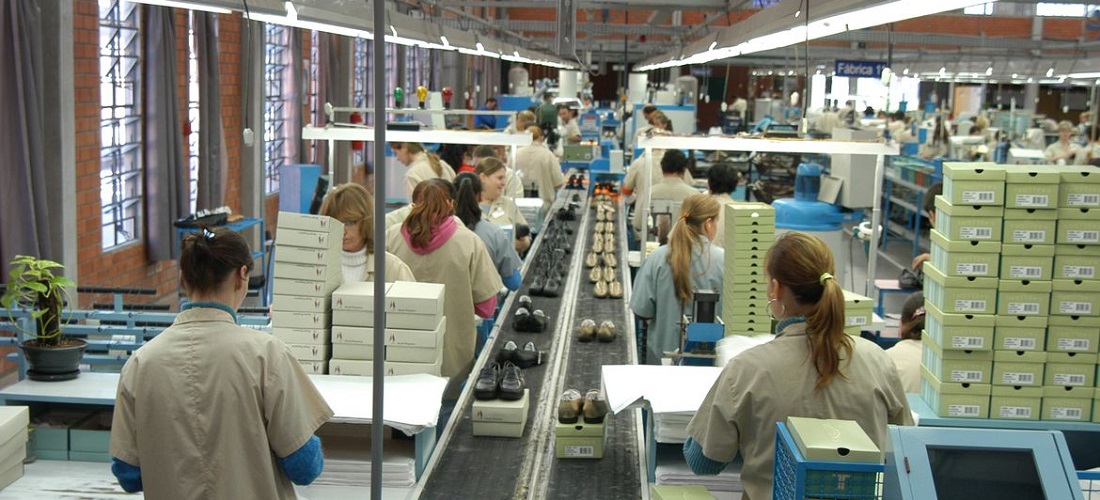
Footwear companies exported US$ 1.3 billion in 2022
Jan, 12, 2023 Posted by Gabriel MalheirosWeek 202302
Data prepared by the Brazilian Footwear Industries Association (Abicalçados) indicate that the year 2022 totaled 141.9 million pairs exported by footwear companies, which generated more than US$ 1.3 billion in currency. The figures are higher both in volume (+14.8%) and revenue (+45.5%) compared to those recorded in 2021. In comparison with the pre-pandemic, the records are also positive, 23.2% in volume and 34.8% in revenue.
In the last month of 2022, exports totaled the shipment of 12.7 million pairs for US$ 110 million, a negative result in pairs (-1.5%) and positive in dollars (+16.3%) in relation to the corresponding month of 2021.
The executive president of Abicalçados, Haroldo Ferreira, points out that exports were fundamental for the production of the sector to register an increase of about 3% over last year, to more than 840 million pairs.
“In 2022, exports represented almost 17% of the sector’s sales, a figure that was 15% in the previous year”, says the director. According to him, the value generated with shipments of Brazilian shoes was the best in 12 years. “It’s something to be celebrated. The challenge, now, is to maintain these numbers in the face of a 2023 that appears more complicated on the international scene, with the increase in world inflation, caused by the war in Eastern Europe, and by the return of a hungry China to the market after the restrictions of the Covid Zero policy”, comments Ferreira.
Over the past year, another positive point highlighted by the leader of Abicalçados is the greater representation of Latin America. “The group of Latin American countries, which accounted for 42% of the value generated with shipments in 2021, increased this share to 45% last year”, evaluates the executive.
See below Brazil’s overall footwear exports and imports each month from Jan 2019 to Nov 2022. The data is from DataLiner.
Footwear exports and imports | Jan 2019 – Nov 2022 | TEUs
Source: DataLiner (click here to request a demo)
Destination
The main destination for Brazilian footwear abroad, the United States imported 17.84 million pairs last year, generating US$ 334.6 million in currency for Brazilian footwear companies. The results are superior in both volume (+17.7%) and revenue (+46.4%) compared to 2021.
The second destination for Brazilian footwear last year was Argentina, to where 15.9 million pairs left for US$ 179.4 million, increases of 19% in volume and 55.8% in revenue in relation to 2021.
The third destination for yellow-green pairs last year was France, which imported 6 million pairs for US$ 65.36 million, a 15.8% decrease in volume and an 8.6% increase in revenue in relation to 2021.
Imports on the rise
Over 2022, footwear imports also increased. Over the year, 25.8 million pairs entered Brazil for US$ 367 million, increases of 13.7% and 28%, respectively, compared to 2021. The main sources remained Asian countries (Vietnam, Indonesia and China, which together accounted for more than 80% of imports).
The largest exporter of footwear to Brazil in 2022, in pairs, was China, which shipped 10.4 million pairs for US$ 49.35 million, up 5.6% and 34.6%, respectively, compared to 2021. The second origin of imports was Vietnam, from where 8.22 million pairs were imported for US$ 175.43 million, increases of 6.2% and 17.3%, respectively, compared to 2021. Completing the ranking was Indonesia, which sent 3 million pairs to Brazil for US$ 61.5 million, up 5% and 25%, respectively, compared to the previous year.
In parts – uppers, heels, soles, insoles, etc. – imports totaled US$ 30.3 million, 26% more than in 2021. The main origins were China, followed by Vietnam and Paraguay.
-
Steel and Aluminium
Aug, 15, 2023
0
Brazilian steel imports mark 78% year on year increase
-
Ports and Terminals
Jan, 07, 2022
0
Portonave has had the highest growth in its 14-year existence
-
Coffee
Jun, 11, 2019
0
Coffee export volumes grow in May
-
Shipping
Jul, 10, 2019
0
Log-In adds Log In Polaris to its cabotage fleet



